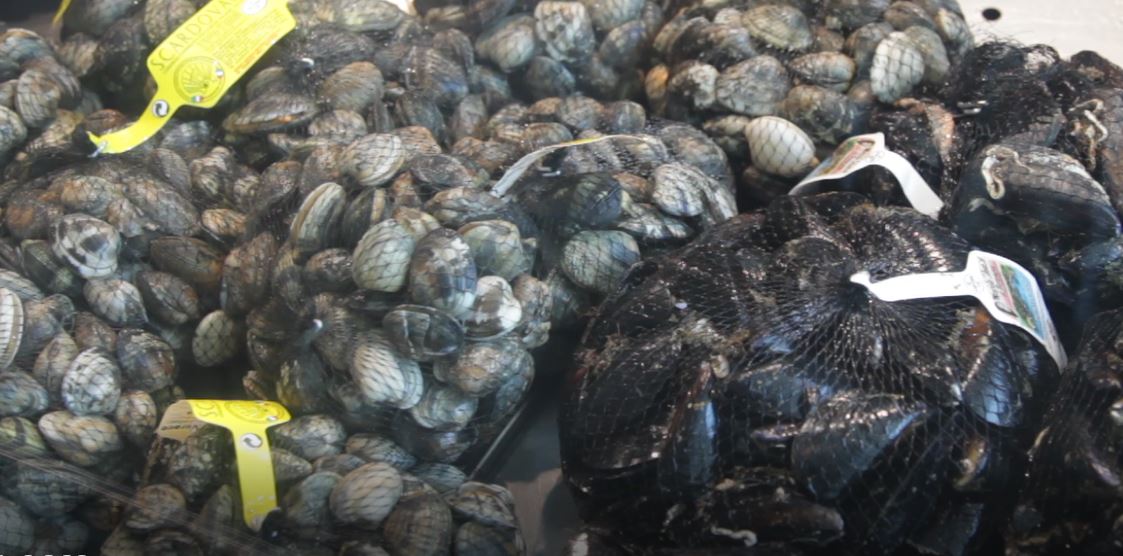Bivalve trade is growing

The report analyses the market situation until September 2017
Demand for bivalves continues strong. Scientific reports suggesting the human health benefits from bivalve consumption, and their eco-friendly image among species coming from aquaculture, have attracted new consumers to this species group. Most of the bivalve production does not enter international trade, but some species travel long distances to reach their customers, such as the green mussel from New Zealand and the mussel from Chile. High demand for bivalves resulted in 5–10 percent price increases in international and domestic trade during the review period. Further demand growth is likely during 2018.
Mussels
The international trade of mussels was stable in terms of volume in 2017, while the value of mussels increased in all importing countries. The EU28 is the main importer of mussels, accounting for about 70 percent of total imports.
The Chilean mussel industry continues to grow, after a rather difficult year in 2016, when the red tide resulted in lower mussel production. In 2017, on the contrary, a new record of 300 000 tonnes will be produced by the Chilean mussel farming industry. This industry is based in the X region, in southern Chile. For the first time in history, Chile has surpassed Spain as mussel producer, becoming the second major producer globally. China, remains the top mussel producer in the world with about 800 000 tonnes produced every year. While China is producing mainly for the domestic market, Chile is exporting most of its production to the international market, being the top mussel exporter in the world.
Following the production increase in 2017, Chile expanded mussel exports by 20 percent in the first nine months, to reach 66 000 tonnes. While the traditional markets Spain and the United States of America continue to be strong buyers, Chile accessed the Chinese market. Since 2015, the country is exporting to China and even though the present level of exports is still quite low (700 tonnes in the first three quarters of 2017), it is expected to become a major outlet in coming years. Chilean exports to Spain grew by 27 percent between January and September 2017 over the same period in 2016, because the bivalve demand in this market is growing. Local Spanish producers, who complained about the invasion of the EU28 market by Chilean product in the past, have been able to diversify the market with their products. Spain is targetting the French market with a fresh product that sells there at competitive prices, and with value added and sophisticated products in the domestic market, such as pre-cooked Galician mussel products in their half-shells.
Mussel sales in France are stable, as the winter months are not a typical consumption period. All products forms are well represented, with Spanish mussels selling in the lower price bracket and the French bouchot mussel positioned in the upper price category, selling at around EUR 5.00 per kg.
Oysters
During the review period, global oyster imports were 40 000 tonnes, 15 percent less than for the same period in 2016. France was the main oyster exporter, expanding its presence in the global market, with almost 20 percent more shipments in the first nine months of 2017 compared with 2016.
The oyster season picked up during the 2017 festive period. France is the fifth main oyster producer in the world, but the most active in international trade. Overall, according to the IFREMER monitoring programme, by early-November seed mortalities were similar to 2016 levels whereas juvenile and adult mortality rates were below 2016 levels. Summer oyster growth was disappointing and a shortage of large oysters is expected for the end 2017. Oysters in France typically sell at EUR 4.60 per kg (number 3 size), but were selling during Christmas period retail at EUR 17.60 by the dozen. Some special oysters during this period can sell for EUR 2.80 each.
Scallops
Scallop trade dropped sharply in the first three quarters of 2017, mainly due to the lower supply from Peru. The United States of America and China are the main scallop exporters and importers. Peru had three consecutive years of disastrous scallop production. As a result, Peruvian scallop exports, which in the past amounted to around 9 000 tonnes for the review period, were down to only 2 400 tonnes in the first nine months of 2016 and 2017. The sanitary office of Peru closed off the main production area for exports of live scallops to the EU28 in 2017. There are signs that the situation will improve in 2018, because many juvenile scallops have recently been found in the water, so there should be plenty of scallops around for the harvesting season in November 2018. Traders are hopeful that the main production areas will be reopened for exports to the EU28, otherwise exports would be limited to the US market for scallop without roe, and this market segment is well supplied by Chinese products.
Clams
International trade of clam was stable during the first nine months of 2017 compared with the same period in 2016. Around 170 000 tonnes were exported and 180 000 tonnes were imported. The main importing countries continued to be Japan and the Republic of Korea, both buying mainly from China. China is in the main clam exporter globally, accounting for about 70 percent of world clam exports. Most of clam is traded in live or fresh form.
Clams are an important food item, especially in Mediterranean countries. In Italy, Christmas Eve is the day of the year with highest seafood consumption, including clams and anchovies that are generally used in appetizers. Most of the bivalves sold in Italy are produced domestically, in aquaculture (Ruditapes philippinarum) and capture fisheries (Venus gallina). Decades ago, the exotic species Ruditapes philippinarum practically wiped out the domestic clam (Tapes decussatus). Only Tunisia maintains some beds of the original species, mostly exporting to the Italian market, at prices that can reach EUR 25.00 per kg.

